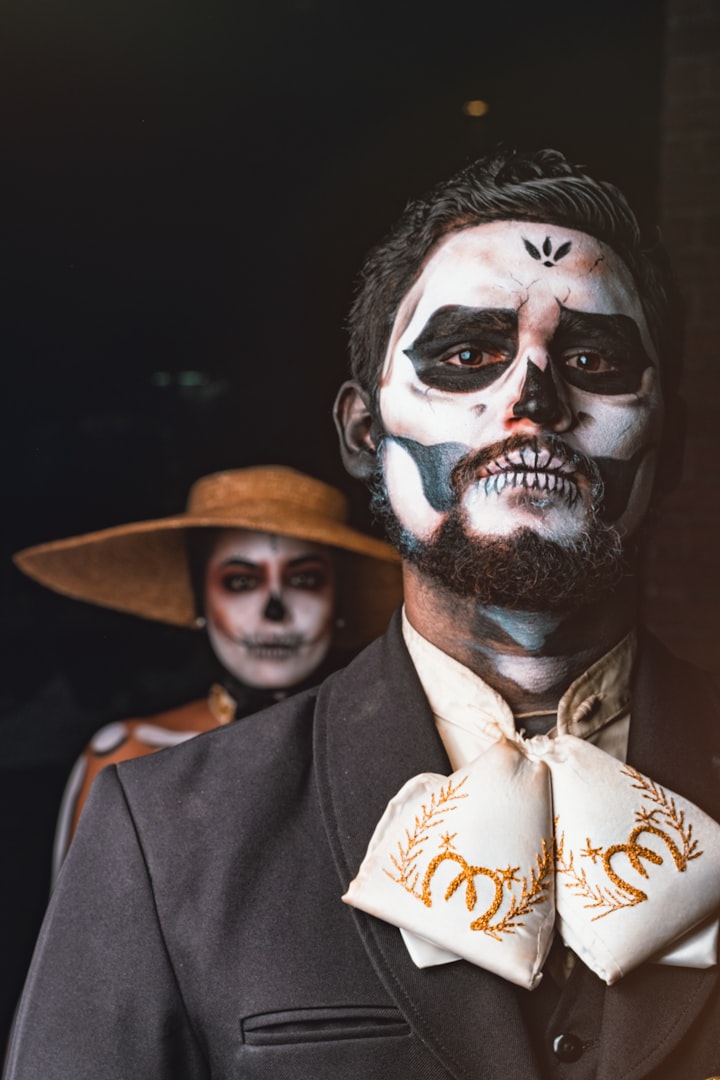The Day of the Dead: "What Would You Do if You Knew That Today Was Your Last Day?"
Philosophy and Festivities may help with coming to terms.

This is a philosophical and existential question that may give most people shivers. "What Would You Do if You Knew That Today Was Your Last Day?" is a thought-provoking question we may not be able to answer. The question is not about what we would do if we knew that it was our last day but rather what we would do differently, knowing that it was our last day.
The question conjures up different thoughts and feelings as we imagine how our last day would play out if we knew it was coming. Would we spend time with those we love, or would we work hard to reach all our goals? Would we be able to let go of the past, forgive those who have harmed us, and move on? Would we cling to life with all our might?
The idea of "The Day of death" has been around since the Greeks. And is typically associated with the Stoic philosophy. Since Stoics believe in living life as if it were their last, they often live their lives more passionately, with less fear and more joy. It is said that people who live their lives as though it were their last day live a more fulfilling and meaningful life.
When you know that today is your last day, what would you do differently? What goals would you still try to accomplish before your final moment comes? Where would you spend your time each day--with whom? If it were indeed your last day on this Earth, how would you choose to live? Would you seize every opportunity and make memories worth cherishing for a lifetime?
"As soon as we are born, we are old enough to die." ― Martin Heidegger.
We don't always consider our own mortality. We live as if we will be here for a long time. We certainly do not think of the death of a young boy or girl to be an acceptable occurrence. On the contrary, we believe it is an error in the fabric of the universe.
When I became a parent, no one had warned me that the instant I had my children, they could now be taken away from me. I'm a single father with twin sons. I never considered one of them could pass away. One was born with a congenital defect that needed life-threatening surgery at the age of 16 days old. What an exciting beginning to parenthood! The prospect of him dying was a genuine concern for me, but I never considered it until then. Fortunately, he is a very happy and healthy boy who turns 6 years old and his twin brother.
The possibility of dying is a normal consequence of being alive.
When we are old, we are too young to die. ~ Japanese Proverb
Death, mortality, and loss are part of the human condition. In philosophy, there's a concept called "philosophical death." It is potent because it begins with the acceptance that life will end. This pushes us to reflect on our existence and put all our efforts into living life entirely while still having time.
Philosophical death is not an abrupt event but a gradual process. As we age or become sick, philosophy can help us accept this fact more quickly and live more profoundly today.
In his "Art of Dying," Stephen Levine proposes four stages in the process of accepting death:
- Resistance
- Germ of an idea, where we become aware of the possibility
- Acceptance
- Surrender
We must make peace with who we are and accept our limits. Death is part of life.
Dia de los Muertos (Day of the Dead)
Every November 1 and 2, Mexico celebrates "Dia de los Muertos," a two-day festival. Although most associated with Mexico, Dia de Los Muertos is observed all throughout Latin America.
The indigenous Aztec ritual of Dia de Los Muertos is combined with Catholicism, introduced by Spanish conquistadores, to commemorate the dead with festivals and vibrant parties. (Dia de Los Muertos is observed on All Saints Day and All Souls Day, minor holidays in the Roman Catholic calendar.)
Dia de Los Muertos is a joyous, festive occasion designed to honor the deceased and ensure they will not be disrespected by grief or sadness. It remembers the lives of the departed with food, drink, parties, and activities that the dead liked in life. Dia de Los Muertos understands death as an inevitable part of life; it is a continuum that begins at birth and continues through adulthood to contribute to society. The dead are also members of the community on Dia de Los Muertos when they are resurrected from their eternal slumber to join in the revelry with their families.
The "Calacas" and "Calaveras" (skeletons and skulls) are the most well-known Dia de Los Muertos symbol, appearing in every part of the holiday: as sweet decorations, as parade masks, and as dolls. Calacas and Calaveras are typically depicted as having a good time in beautiful clothing with amusing situations. During Dia de Los Muertos, people go to the cemetery and bring gifts to their ancestors. Dia de Los Muertos is a time for the celebration of life and remembrance that death is inevitable.
The Day of the Dead is a long way from Halloween and more akin to Thanksgiving, observed in Canada and the United States. For many Mexicans — particularly Oaxacans — Day of the Dead is the most anticipated holiday of the year, easily eclipsing Christmas.
The dead are not paid homage or honored in any way. They are, instead, considered present. This is a party for the dead, not one for them.
The holiday is dominated by families believing that the spirits of their ancestors return to visit them. There is plenty of food and drink, which are loved by the departed.
The living shower the deceased with meals and gifts while adorning the graves and telling stories about their departed family members. The most eye-catching hue on altars decorated with brilliant marigold flowers is yellow.
The deceased are served a sumptuous meal composed of their favorite foods and beverages. Marigolds are laid out as runways to lead spirits back to their loved ones. The fragrance of marigolds is said to lure the dead. Other blooms include Flor de Muerto and Cresta de Gallo (Cockscomb). Candles are also popular on altars. Visitors light them and leave the dead to decide how long they want to burn before snuffing them out.
The living celebrates with song, dance, fireworks, and paper lanterns that signify the spirits' return for a few hours of earthly revelry.
This is not about fear of death but rather about love of life. It is about taking joy in all you do, not worrying about what might happen but rather enjoying what you have now.
If your philosophy is to live life as if it were your last, then you would make every decision as if it were your last, living every day to its fullest.
About the Creator
Alejandro Betancourt
I am a single father, an entrepreneur & a businessman. I founded a couple of venture capital funds. I write about business, tech, finance & the human spirit.






Comments
There are no comments for this story
Be the first to respond and start the conversation.